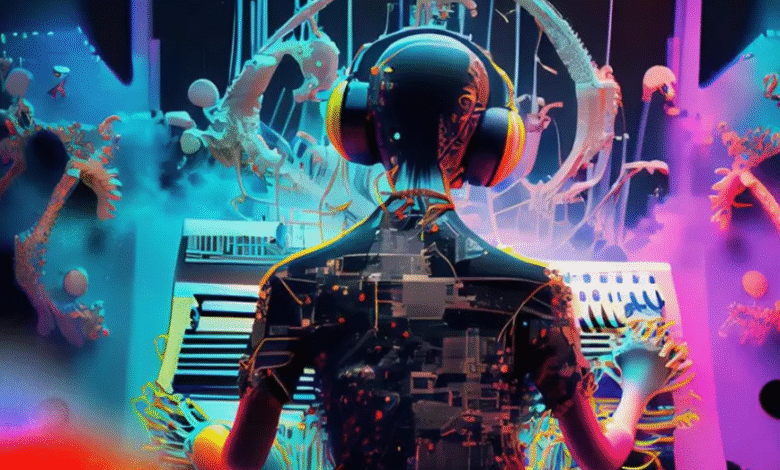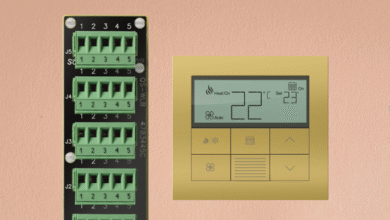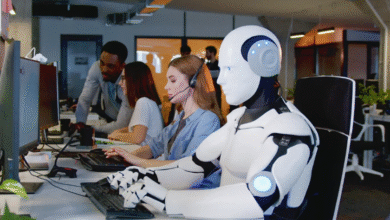No Music Skills? No Problem. How AI Generators Are Composing the Future.

Have you ever been there? You’re editing a video for your YouTube channel, crafting a social media reel, or putting together a presentation. You know it needs something to bring it to life—a soundtrack. So you fall down the rabbit hole of royalty-free music sites, skipping through hundreds of generic “uplifting corporate” or “quirky ukulele” tracks, getting more and more frustrated because nothing quite fits the vibe you’re going for.
For years, getting custom music meant one thing: hiring a composer, which was expensive and time-consuming. But what if you could have a composer on call, 24/7, ready to create a unique track based on your exact specifications, in any genre, in seconds?
It sounds like science fiction, but it’s not. It’s the magic of AI music generators. These incredible tools are not just a novelty; they are fundamentally changing the creative landscape for content creators, filmmakers, developers, and anyone who needs the perfect sound.
Let’s pull back the curtain and see how it all works.
How Does an AI Actually “Write” Music?
It’s easy to imagine a little robot sitting at a piano, but the reality is both more complex and more fascinating. Most AI music generators work using sophisticated models, often based on architectures like Transformers (the same kind of tech behind AI chatbots).
Here’s a simplified way to think about it:
- The Learning Phase: The AI is trained on a colossal library of existing music. We’re talking thousands upon thousands of songs, spanning every genre, mood, and instrument imaginable. During this phase, it isn’t just memorizing melodies; it’s learning the rules and patterns of music—things like harmony, rhythm, chord progressions, and song structure. It learns what makes a blues song sound like the blues, or what gives a film score its epic, sweeping feel.
- The Generation Phase: When you give it a prompt, you’re providing a starting point and a set of instructions. The AI uses its vast knowledge to generate a new piece of music that fits your criteria. It predicts the next logical note, chord, and beat based on the patterns it has learned, assembling them into a coherent and often surprisingly emotional piece of music.
It’s less like a parrot mimicking sounds and more like a student who has studied every great composer and can now create new work in their style.
See also: Understanding Cybersecurity: Protecting Yourself in a Digital World
The Best AI Music Tools in the Game Right Now
The world of AI music is exploding, and new tools are popping up all the time. Here are a few of the current heavy-hitters that are worth checking out:
- Suno & Udio: These two are the talk of the town, and for good reason. They are shockingly good at creating full-fledged songs, complete with AI-generated vocals and lyrics. You can ask for a “soulful blues track about running out of coffee” or a “power metal anthem about spreadsheets,” and it will deliver a surprisingly catchy and complete song. They are perfect for novelty, inspiration, or creating unique vocal tracks.
- Soundraw: This is my go-to for instrumental background music. Instead of a text prompt, you choose a mood, genre, and track length, and Soundraw generates a dozen options. The best part? You can then go into the track and customize it, changing the intensity, and swapping instruments in and out. It’s less of a black box and more of an interactive composing tool.
- AIVA: AIVA is geared more towards serious composers and filmmakers. It excels at creating classical and cinematic orchestral music. It has been around for a while and produces stunning, emotionally resonant scores perfect for dramatic video content or even as a starting point for professional musicians.
The Art of the Prompt: How to Talk to Your AI Composer
Getting a great result from an AI music generator requires learning a new skill: writing effective prompts. The more specific and evocative you are, the better the output will be.
Here are some tips and prompt formulas to get you started:
Formula: [Mood] + [Genre] + [Instrumentation] + [Tempo/Vibe]
- For a Podcast Intro: “Upbeat and inspiring lo-fi hip hop, featuring a simple piano melody, a steady beat, and no vocals. Around 100 bpm. Perfect for an educational podcast.”
- For a Travel Vlog: “Adventurous and epic cinematic track. Starts slow with orchestral strings and builds with powerful drums and brass. Evokes a sense of wonder and discovery.”
- For a Gaming Stream: “Intense and driving synthwave. 80s retro vibe with pulsing synthesizers, a hard-hitting electronic drum machine, and a dark, moody feel. Fast-paced.”
- For a Relaxing Meditation Video: “Calm and ambient soundscape. Gentle, flowing synth pads, soft nature sounds like rain, and a very slow, minimalist structure. No percussion.”
Pro-Tip: Don’t be afraid to mix and match! “Acoustic folk meets electronic chillwave” or “jazzy bossa nova with a hip hop beat” can lead to some truly unique and amazing results.
The Final Step: Putting Your Custom Soundtrack to Work
So, you’ve prompted your way to the perfect track. It captures the exact mood of your project. Now what? The final, crucial step is integrating it into your content. This is where you bring your visuals and your custom audio together to tell a complete story.
For me, this is where using a seamless, all-in-one creative tool is essential. It can be jarring to generate music in one place, edit video in another, and create graphics somewhere else. This is where you can see the power of combining AI music with Adobe Express. You can create your video, animate text, and design your graphics, and then directly add the AI-generated track you just created, all within the same workflow. You can easily adjust the volume, trim the track to fit your video clips perfectly, and see how it all works together in real-time.
It streamlines the entire process, keeping you in the creative flow. Instead of fighting with multiple tabs and file formats, you’re focused on the final product. That’s the real promise of these tools working in harmony: they remove the technical friction so you can focus on your story.
AI isn’t here to replace human musicians. It’s here to empower creators. It’s a collaborator that can help you overcome creative blocks, a tool that can score your stories, and a gateway to a world of sound that was once out of reach for most of us. So go ahead, open up a generator, and give it a try. Your next masterpiece is just a prompt away.




